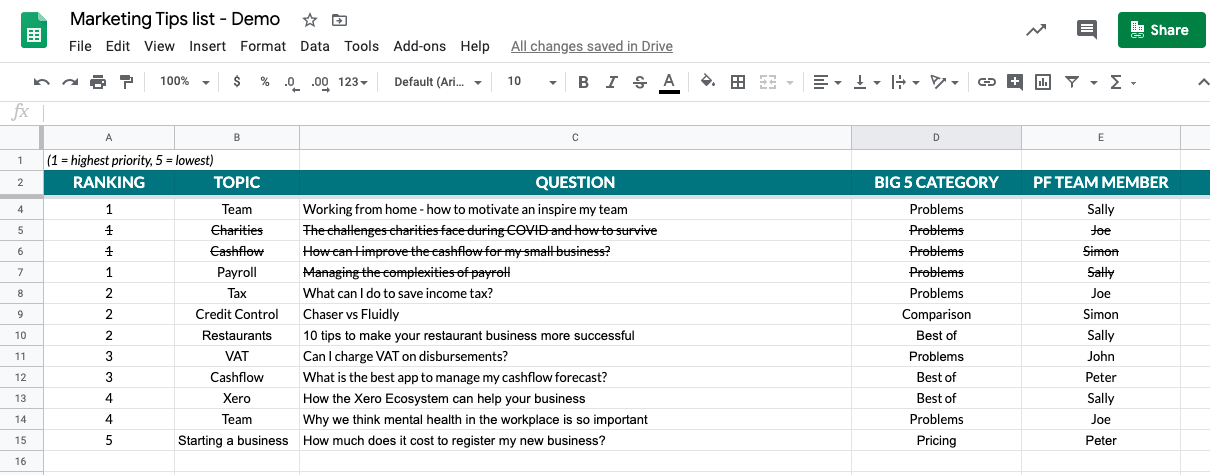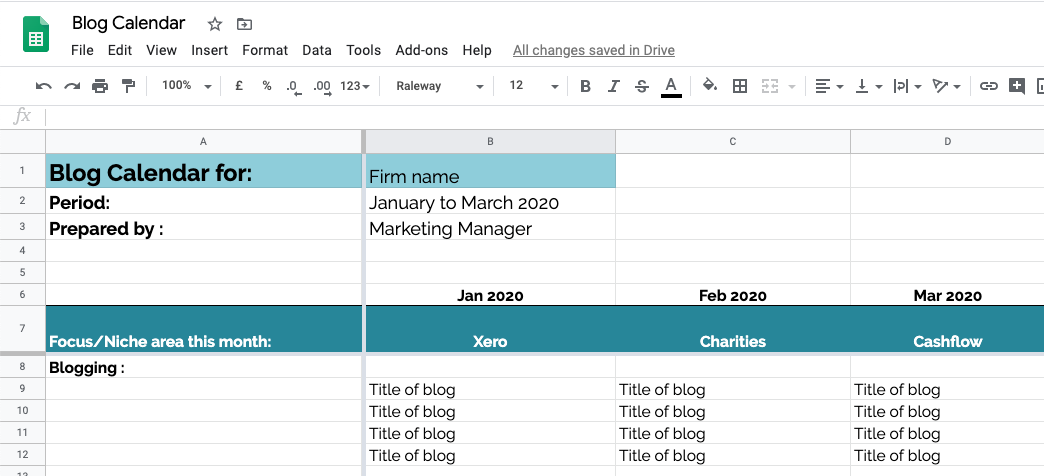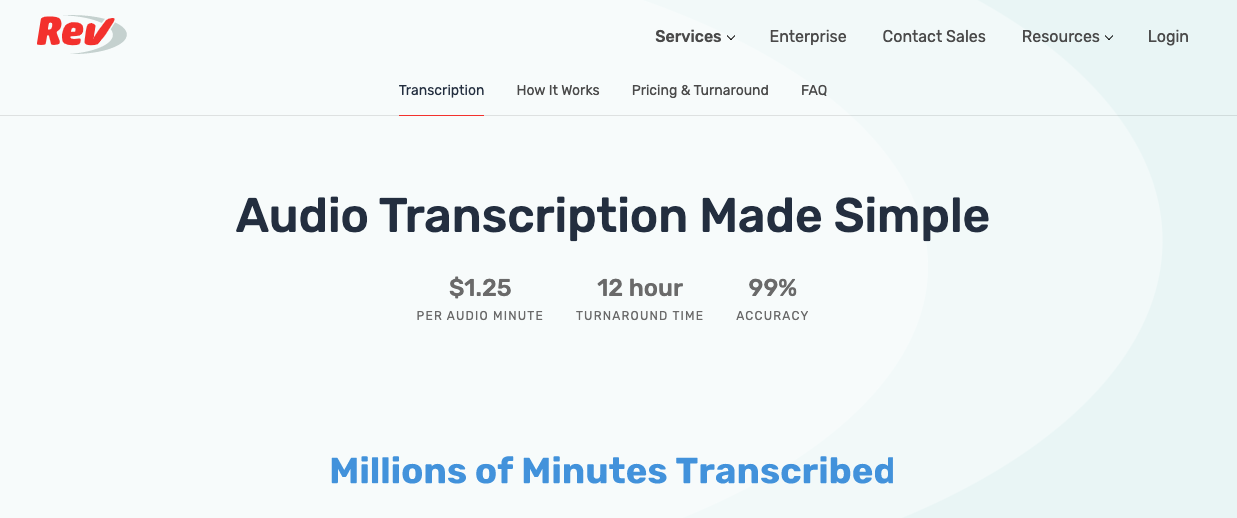
You may be writing more than usual at the moment, even if it’s just a few blogs or emails, because it feels urgent, considering what’s going on in the world.
Accountants have seen some incredible results lately as a result of continually providing relevant content to their target audience. New leads and sales, increased income on existing client packages, improved Google Analytics numbers and grateful clients.
It’s important not to lose this momentum as things ‘slow down’ or move past this current challenging time. Your target audience will still need you to help them solve the issues they have, and you’ll want to continue being seen as a source of knowledge, to build the trust that your prospects need to move towards their buying decision.
To keep up your blogs when it doesn’t feel as urgent, or when when you get busy and overwhelmed, it’s best to plan ahead and think clearly about the types of blogs you want to post, how often you can afford to post, and whether your team are willing to be involved in the process (side note, they need to be).
Keep a list of the questions your clients are asking
If one client has asked a particular question, the chances are, there are plenty of other clients and prospects wondering about the same thing. And once you’ve written a blog answering that question, you’ll have the content available to share with any future prospects and clients who ask the same question.
This is not just about marketing. It will simplify your processes as well and save you time. When a client has a question, instead of typing a long response (one you’ve probably already written 2 or 3 times before), or getting on the phone to chat through the issue for 30mins, you can send them a link to the blog you have already written.
So how do you keep track of all of these amazing questions?
Start with something simple: Create a Gsheet and share it with your team. It’s very easy to set up and won’t take long.

Each time you or the team get asked a question from a client that needs an answer longer than a few lines, add it to the Gsheet. If you have a little more time on your hands, you could also put the questions in order of priority, highest to lowest, so you answer the most important questions first. You could even add a column for who is in charge of writing each blog.
You could also keep a list of questions on Evernote, Trello, Slack or your notes app on your phone, but if you are doing this jointly with the team, it needs to be in a shared document that everyone can access.
Get the team involved
Marketing is not a one-man band. Want to get the most out of your marketing? Get buy-in from the whole team. They deal with clients every day and they hear the questions your clients are asking first hand. We suggest running a They Ask You Answer workshop (TAYA) with the team. Set aside 30 – 45 mins, find a quiet space with no distractions, explain the TAYA concept to them and chat about the types of questions your clients are asking. This gets the ball rolling and shows them how easy it can be to create a content plan.
Share the Gsheet with the team and explain when and how to use it. Assign one blog per month, quarter, or year to each team member to write. They might feel overwhelmed by having to write blogs (“I’m a numbers person and didn’t sign up for this!”), so starting small with only one blog per quarter or year (depending on the size of your team) will help.
Encourage them that the blog doesn’t need to be perfect. They just need to get the most important points down on paper, even if this is in bullet points to start off with. Tell them to pretend they are writing the blog as an answer to a client (which is essentially what they are in fact doing). You as the owner or marketing person can finish up the article and make it blog ready if needed or you can reach out to a marketing team to do it for you.
The PF Marketing Tips are written by the PF team in rotation, which means we each write a marketing tip every 6 weeks. It’s plenty of time to plan the contents of the tip and have it reviewed by the team. We often end up writing a marketing tip that answers a question we’ve had from one of our own clients so it’s easier to write when you’ve experienced the question first hand.
Another benefit of TAYA, is your blogs can be used as a training library for your team. They might not always know the answers to the questions their clients ask, and that’s okay. Let them search for the answer in your blogs first before they come to you for help.
If they can’t find the answer, you could encourage them to write the blog and find out the answers themselves (with your guidance of course).
Create a blog calendar
A blog calendar will allow you to plan what you are going to post when. At the beginning of the year, plan out your blogs for the next 3, 6, or 12 months. You could use the same Gsheet you created for TAYA and just create the calendar in a new tab.

Involve your team in this as well so when it comes to their turn to write a blog, they feel like they have been involved in the decision and aren’t just getting told to so something they feel isn’t part of their job description.
The calendar you create doesn’t need to be set in stone and can be flexible, but it’s good to have a plan as it holds you accountable.
When we do get back to in person events, you could think about content you could write that will help promote those events, or let people know which events you will be attending. In the meantime, focus on online events (like Webinars you are running), upcoming deadlines, new Government regulations, new team hires, new product launches or new apps soon to be launched, and think about blog topics you can write around those dates and topics.
You may even want to create a mini campaign around a particular event you are running or attending, which will include a few blogs on the key points of the topic of the event – what the event is about, what it will include, who will be there, what the attendee will get out of the event etc.

You could divide the year into quarters and have a theme per quarter or even a theme per month. This will help if you are wanting to send our monthly newsletters as you can have a theme per newsletter per month as well.
Plan to post 4 blogs per month (1 per week) and don’t put pressure on yourself to post more unless you want to, or you have something super important to say. Expecting yourself to post more often than this is unrealistic and although you may have the best intentions, more than likely, you will fail at keeping this up. Having a weekly deadline means you are more accountable..
It’s better to post helpful, useful content once per week, rather than every day just for the sake of posting. By limiting the number of posts, it allows you to truly question if the content you are creating is relevant to your target audience.
Make your content & ideas easily accessible for the whole team
What else might you need to ensure your content is organised in a way that is easily accessible in the future, saving time, and available to your whole team?
- A marketing folder: (With a specific blog folder) within your business shared file drive. We use Google Drive but Dropbox or OneDrive work just as well.
- Consistent naming: Use the same format when it comes to naming of your blog files. This helps if you ever want to refer back to a blog and makes it easier for the team to find the blogs. Use the blog title as the file name with the date and perhaps the initials of who wrote the blog.
- Google Docs: Use Gdocs instead of Word to type up the blog. It saves automatically as you go so there’s no chance of losing your work and you can access it from wherever you are, so you don’t need to have the Word document with you. It allows sharing access with restrictions which means you can share the file with a colleague or your marketing team to review without the risk of them changing what you’ve written. When we’ve reviewed content from clients in a Word document, we’ve ended up with multiple versions of the same document as it has to be saved and shared back and forth and this often ends in confusion as to what the changes actually look like.
- Recording audio: If you find it easier to get your thoughts out verbally instead of writing them, record yourself a voice note with the key points or use something like Rev.com that converts audio to text for you.

Create content that is not only useful, but lasts
Sometimes, we create content on the spur of the moment for a need that suddenly appears out of the blue….(ahhemm Coronavirus). It’s okay to share specific COVID-19 content because that’s what the majority of your prospects and clients need right now.
You might even consider creating a support page on your website to make it easier for your audience to find helpful, supportive content for their business, that relates to the issues they are dealing with due to COVID-19. We’ve created one at PF. Another great example is this support page by Pink Pink Financials.
But, it’s important to look beyond this too.
While it’s great to create content that will help your prospects and clients as much as possible during this time, you want the content to be relevant during other times too. For example, a blog that is solely COVID-19 related, would be one about ‘furloughing employees’. A blog that is helpful during the crisis and thereafter, would be about ‘tracking productivity and profitability by employee’.
Will people still find your blog useful once this is over?
Plan when and how you are going to write your blogs, so lack of time is no longer an excuse
One of the biggest excuses for not writing or posting blogs is lack of time. This has been wiped out for now, because everything is urgent; but at some point, you’ll go back to things being a little quieter. What do you do when you’re actually using your time for travel and events and other things which are on hold right now?
- Share the workload: Have the TAYA session with your team to get the ball rolling. You’ll find people have lots to say when given the opportunity.
- Schedule one morning a week: Or put aside one or two days per month to work on your blogs. If it’s in your diary, it’s much harder to put off.
- Write your blog before it’s due to be published: We often put blog writing off because we don’t feel like writing, or we don’t know how or where to start. Jot down a few bullet points when you have the initial idea for the blog, and you’ll find the process will be much easier when you get to writing the blog. If you have some extra time or are feeling particularly creative, write write write! You can schedule the blogs ahead of time so they go out automatically.
Although you may blame time as the reason why you don’t blog, this is often not the real issue. What is truly stopping you?
- Confidence: Perhaps you don’t feel what you have to say is important enough. You’re not alone. But, if your blog helps just one person, that’s enough! And if your clients are asking the questions you are answering in your blogs, they will always be relevant and important.
- Perfection: You may fear that your blog isn’t perfect. We believe there’s still a victory in ‘not perfect, but done’. As long as you use common sense, remain honest, be human and just be yourself, it doesn’t need to be perfect.
- Expectations: You may expect a blog to deliver you specific leads, and if they don’t, feel they aren’t valuable. We aren’t promising a blog you write will lead to a direct sale. The purpose of blogs is to provide useful, helpful information, for free, that will help build trust between you and your prospects. If you aren’t tracking your marketing numbers on a monthly basis, and are only looking at sales and leads, you’re missing the whole picture. Using your Google Analytics data, you can track which blogs do better or worse, and adjust your marketing plan accordingly.
Repurpose your content
Reuse what you have written in other forms of marketing. People respond to marketing differently so it’s important you provide them with different ways to digest what you want to tell them. Some prefer reading blogs, others will download and read ‘how to’ guides, some prefer watching videos or listening to recordings or podcasts, and others like flicking through short social media posts.
When your blogs are written, they can form foundational content which you can then reuse in other areas of your marketing.
For example, if you have 3 or 4 blogs around a similar topic, you could create a PDF guide based on this topic. You could send a newsletter on this theme to a particular industry or segment, including quotes and links to the blogs within the newsletter.
If your blog is made up of 2 or 3 main points, you could create a video for each of those points, include a link to those within your blog, and share them on social.
Whether you put pen to paper, type a few key points into a Gdoc or record your thoughts on your daily walk, just start. Start simple. Find a way that works for you and your team, and you can improve your systems and processes as you go.
And always ask yourself if what you are writing about is answering a question or solving an issue that a client or prospect has had or may have in the future. Your readers and audience will be doing their research before they get in touch. So the more content you create on what they need to know, consistently over time, building up a library they can choose from, the faster they make their buying decision.

